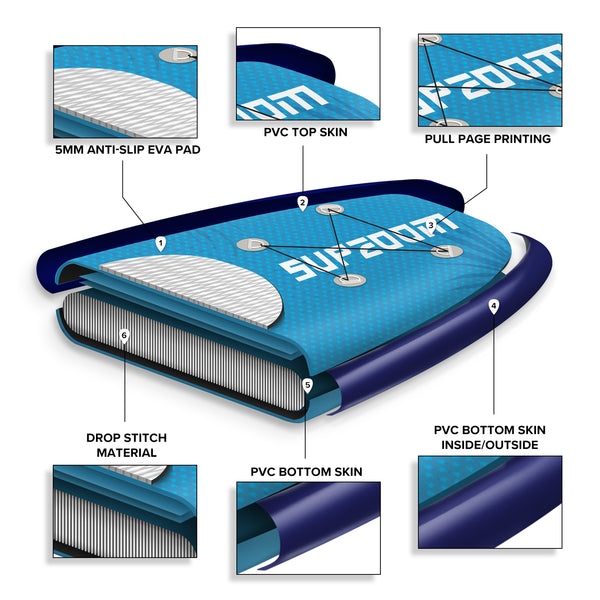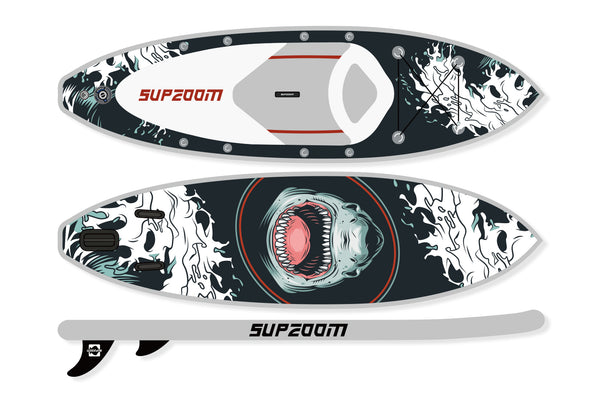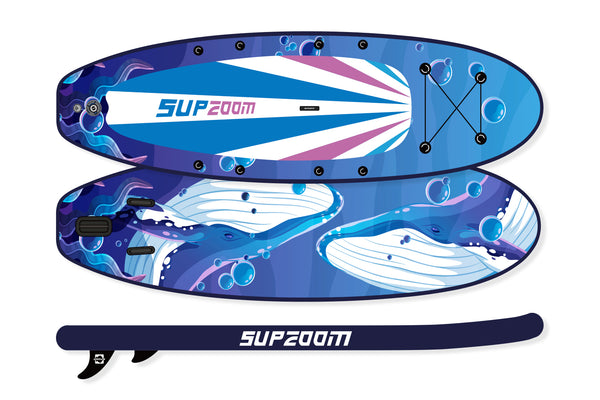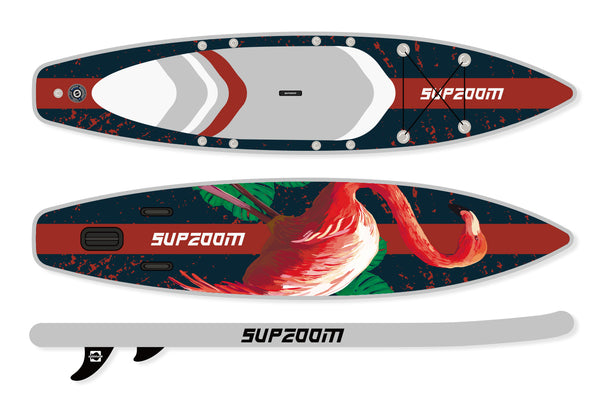What is the material of the inflatable paddle board? How to make it?
The paddle board is made of PVC, nylon cloth, and drop-stitichg material. The main material, perhaps everyone has heard, is called "drop-stitich". This material is mainly shaped for sup. Although you would think that such thin ropes would be very fragile just by looking at the material, it turned out to be very strong when inflated. This material was first used to make inflatable beds, inflatable swimming pools and hot water tanks in South Korea. The thickness of the drop-stitich is different, the bearing capacity is also different. Most of the materials on the market are single-layer drop-stitich, but this is enough to carry a weight of 125kg. In addition, there are double-layer drop-stitich, single-layer drop-stitich with reinforcing strips, and double-layer drop-stitich with reinforcing strips. The thicker, the stronger the torsion resistance of the paddle, but the heavier the weight.

Cut the drop-stitich material according to the board template, and then glue the edges with PVC to form an air bag. Dig out the air valve port and install the air valve. The prototype of a paddle board is ready. Take the SUPZOOM turtle paddle board as an example:
Let me talk about making boards of different shapes. The most common methods are heating and pressure. Another method is to cut the head and tail of the board into different shapes, and then glue it with PVC. Adding an extra layer of PVC can make the board stronger, but it also adds weight. Generally speaking, inflatable boards are made by hand, which is why the quality of boards of different brands or even the same brand may vary.
SUPZOOM SURF FASHION SHARK DESIGN INFLATABLE PADDLE BOARD 9'5"X32"X6"
SUPZOOM 8' KIDS STYLE WHALE INFLATABLE PADDLE BOARD
SUPZOOM DOUBLE LAYER DWF FLAMINGO 11'6" LONG INFLATABLE PADDLE BOARD
Are all boards the same?
The answer is of course NO. There are many reasons for different boards.
Material: Generally speaking, good goods are not cheap, and cheap goods are not good. Good brands generally use good quality materials. The best board is made of drop-stitich material and top quality nylon yarn, which gives the board a higher strength. The more the number of drop-stitich, the lower the bending rate of the board.
Thickness: The thicker the board, the harder it is. This is why it is recommended that heavy customers use thick boards. The thickest board is 15cm. Some brands also tried to make thicker boards, but the experience was very bad because it was too far away from the water for good paddling operations.
Shape: Most brands produce boards of different shapes and sizes to meet the needs of different consumers. Generally speaking, the various brands of all-around 320CM boards are similar, but there are big differences between different brands of surfboards and racing boards. For example, the shape of the tail may be very different, so that each board has a different feel and performance.
Fins: There are many types of fins, but generally they are divided into two types. One is fixed on the board and integrated with the board, and the other needs to be installed on the board. The fins integrated with the board are generally very durable, they can withstand strong knocks without damage, and have a certain degree of softness and flexibility. But this also means that their performance is slightly inferior to hard fins. Hard fins are generally installed on the board through small bolts. This kind of fin has good performance, but it is also more fragile. You should pay more attention to the board when you set off and return to the shore, and be careful not to touch the stones.





